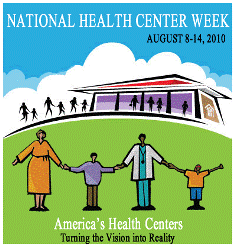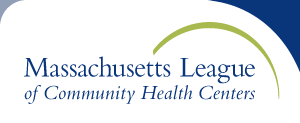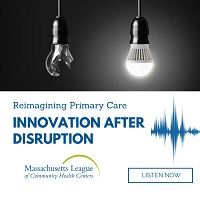
8-9-10 Feature Story:
Washington, DC -- In recognition of the historic contributions of community health centers to the U.S. health care system, and their featured role in upcoming national health reform efforts, President Barack Obama issued a Presidential Proclamation on Friday, August 6 to mark National Health Center Week, an annual celebration that highlights the work of health centers in the more than 7,000 communities they serve nationwide.
Click here to read the proclamation.
Historic Roots in Massachusetts
In Massachusetts, 52 health centers provide care to nearly 800,000 residents, offering a broad range of health care and social services through 285 sites statewide. It was 45 years ago that the first health center in the nation was founded in Massachusetts at Columbia Point, Dorchester by physician-activists H. Jack Geiger and Count Gibson. Just two years later, a young Senator Edward M. Kennedy helped to expand the model across the country, creating a federal program that now serves 20 million people.
Click here to view a listing of health center events happening in your community all week long.
Recent funding for capital projects, job creation and service expansion at federally funded community health centers represents the largest investment in these institutions since their founding in the 1960s. These investments from both the American Recovery and Reinvestment Act and the Affordable Care Act have the potential for transforming the way health care is delivered and the value that community health centers bring to the field of medicine in four major ways.
First, over the next five years, unprecedented investments totaling $11 billion for health centers across the country will double the number of patients served nationally from 20 million today to 40 million in 2015. In Massachusetts, as a greater portion of our residents struggle with access to primary care, the patient base of community health centers has started to expand. While some health centers have begun to serve more suburban-based patients, all health centers have the potential to become the first choice for primary care for larger numbers of communities across the state.
Second, as the nation seeks answers for improving the quality and efficiency of health care, the health center model has the potential to prove that a coordinated and comprehensive approach to care delivery is a solution. Community health centers have long operated within a patient-centered care model, employing comprehensive care teams that include physicians, nurse practitioners, nurse health educators, behavioral health counselors, language interpreters and community health workers who proactively plan care with patients. As a result, health centers have been able to tackle a range of public health challenges like smoking and obesity rates as well as lower the number of hospital emergency department visits and hospitalizations for patients with chronic illnesses such as asthma and diabetes.
While adoption of electronic health records (EHR) has been slow among primary care providers as a whole, 44 of Massachusetts health centers have either implemented or are in the early stages of implementing EHR systems. Leveraging our 800,000-patient network, community health centers have the potential to demonstrate through data, the value of the patient-centered model in increasing both quality and efficiency of primary care.
Third, the nation's health system is broken. Health care costs are unsustainable, access is declining and quality is waning. There is general consensus that we must restructure the way we pay for health care. The health center model has the potential to prove that a highly integrated approach to providing care is a solution. Community health centers have longstanding relationships with hospitals and other local providers and offer services outside the traditional definition of primary care that include dental, vision, pharmacy and behavioral health services. Consequently, they are well-poised for payment reform models that require tight management of patient care across multiple providers.
Several research studies demonstrate that health centers yield substantial cost savings to the health care system by reducing emergency department visits, hospitalizations, and other avoidable, costly care. A new study from the George Washington University finds that the expansion of health centers will contribute to even higher savings: (1) Up to $122 billion in total health care costs would be saved between 2010 and 2015; (2) Health centers would save as much as $55 billion for Medicaid over the same five-year period. Of that, the federal government would save $32 billion, with states benefiting from the rest.
And finally, in recent years, the burden of medical school debt, average starting salaries and a lack of teaching and training opportunities have prevented many medical students from pursuing their dream of primary care. New federal investments and innovative workforce policies implemented by health centers have the potential to stop this decline. By increasing loan repayment as well as training, teaching and research opportunities, health centers can lead the way in making primary care more of a sustainable and attractive career choice for medical students.












